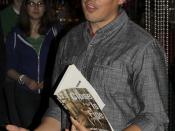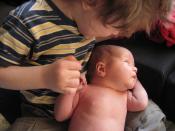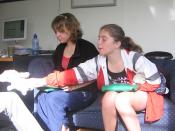Eliot uses a variety of techniques to evoke scenes, characters and moral atmosphere. Such techniques include the use of metaphor and simile to evoke feeling in what Eliot called the 'objective correlative' technique, the presence of certain recurring images, the employing of dramatic monologue as well as direct speech, the frequent use of allusion, and the creation of olfactory, aural, and tactile landscapes to compliment the visual ones. As we shall see the evocations of the three elements of poetry in question - scene, character and mood - are interdependent. First, I shall consider the use of dramatic monologue.
Many of Eliot's early poems are dramatic monologue, most notably ...Prufrock and Portrait...These are both evocations of character. In Portrait of a Lady, the narrator is not the lady of the title. We see the lady externally - she is described by the narrator - and we see the narrator internally - he is characterised by his own peculiarities in the way he views the world, which come through most clearly in dramatic monologue.
Consider, for example, the following quotation from Portrait...:
Among the windings of the violins
And the ariettes of cracked cornets
Inside my head a dull tom-tom begins
The cornets are not really cracked and the sound of violins need not be winding, this is just how they appear to the narrator. Thus his reluctance to be at the concert is conveyed. Dramatic monologue is used for a similar effect in ...Prufrock. Here, the fragmented, anaphoric form of the poem reflects the mode of Prufrock's thought and so contributes to his characterisation.
As stated earlier, the lady in Portrait of a Lady is depicted externally. We see in this another strategy of Eliot's for effective characterisation. She is effectively characterised by direct speech.


